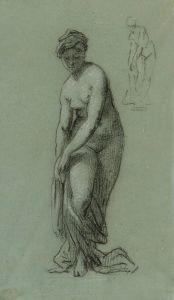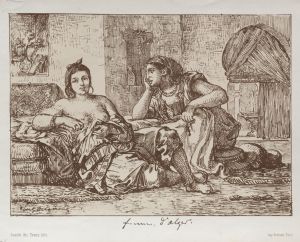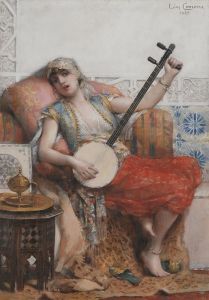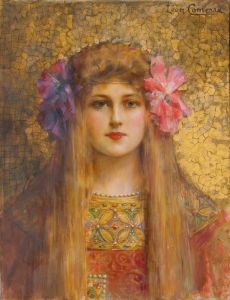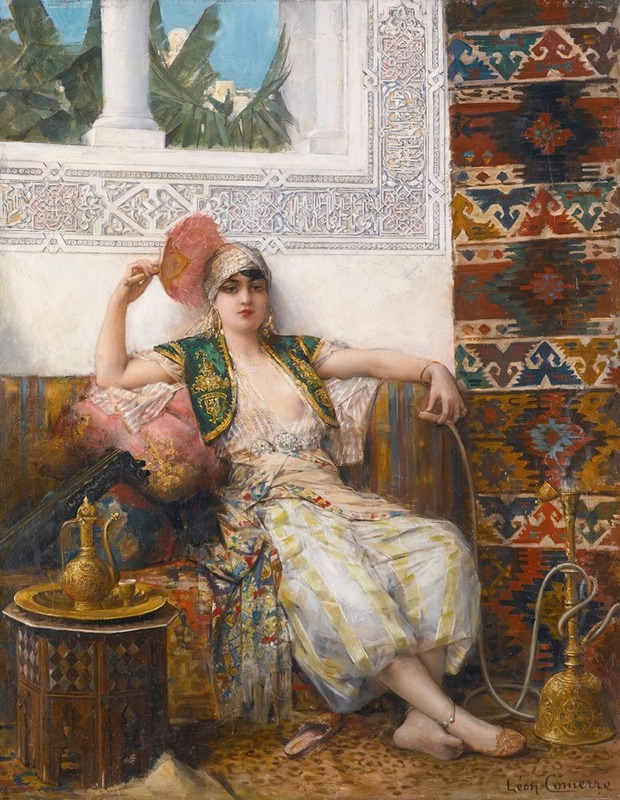
Odalisque
A hand-painted replica of Léon François Comerre’s masterpiece Odalisque, meticulously crafted by professional artists to capture the true essence of the original. Each piece is created with museum-quality canvas and rare mineral pigments, carefully painted by experienced artists with delicate brushstrokes and rich, layered colors to perfectly recreate the texture of the original artwork. Unlike machine-printed reproductions, this hand-painted version brings the painting to life, infused with the artist’s emotions and skill in every stroke. Whether for personal collection or home decoration, it instantly elevates the artistic atmosphere of any space.
Léon François Comerre was a French academic painter known for his portraits and genre scenes, often featuring Orientalist themes. One of his notable works is "Odalisque," which exemplifies his skill in capturing the exotic allure and intricate details associated with the Orientalist movement in art during the late 19th and early 20th centuries.
Comerre was born on October 10, 1850, in Trélon, France, and he studied at the École des Beaux-Arts in Paris. He was a student of Alexandre Cabanel, a prominent figure in the academic art world. Comerre's work was well-received during his lifetime, and he exhibited frequently at the Salon, where he won several awards, including the prestigious Prix de Rome in 1875.
The painting "Odalisque" is a representation of a reclining female figure, a common subject in Orientalist art. The term "odalisque" refers to a female slave or concubine in a harem, and it became a popular motif among Western artists who were fascinated by the exotic and often romanticized depictions of the East. Comerre's "Odalisque" is characterized by its attention to detail, vibrant colors, and the sensual portrayal of the subject, which are hallmarks of his style.
In "Odalisque," Comerre employs a rich palette and meticulous brushwork to create a sense of luxury and opulence. The figure is often depicted adorned with elaborate jewelry and surrounded by sumptuous fabrics, emphasizing the theme of exoticism. Comerre's ability to render textures, such as the softness of skin and the sheen of silk, adds to the painting's allure and realism.
Comerre's work, including "Odalisque," reflects the broader cultural fascination with the Orient that was prevalent in Europe during the 19th century. This interest was fueled by increased travel and exploration, as well as the publication of travelogues and literature that romanticized Eastern cultures. While modern perspectives may critique the Orientalist movement for its stereotypical and often inaccurate portrayals, Comerre's paintings remain appreciated for their technical skill and aesthetic appeal.
Throughout his career, Comerre continued to explore themes of beauty and exoticism, and his works were collected by art enthusiasts across Europe and beyond. He passed away on February 20, 1916, in Paris, leaving behind a legacy of paintings that continue to be studied and admired for their contribution to the Orientalist genre.
"Odalisque" by Léon François Comerre is a testament to the artist's mastery of form and color, as well as his ability to capture the imagination of his audience through the depiction of an idealized and romanticized vision of the East. The painting remains a significant example of Comerre's work and the broader artistic trends of his time.





